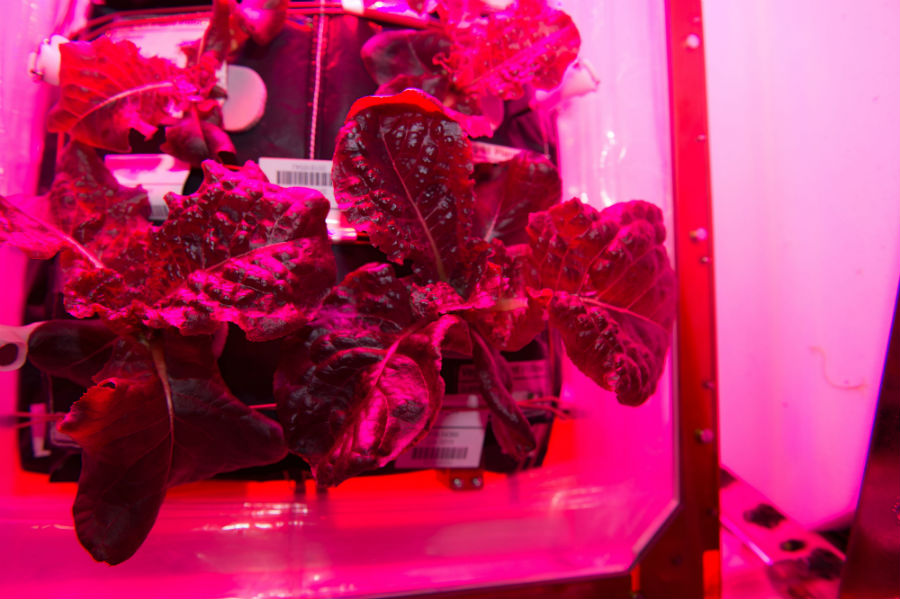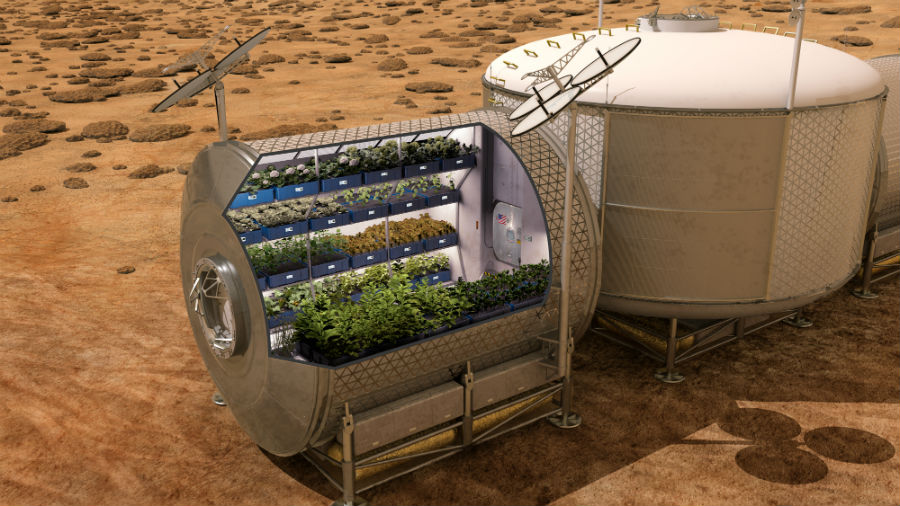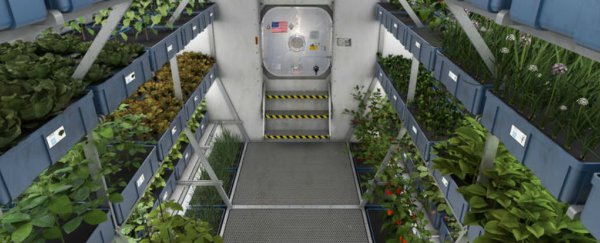NASA astronauts on the International Space Station will get their first taste of 'space lettuce' today, when they harvest a crop of red romaine lettuce that's been cultivated over the past 33 days in the orbiting lab's special Veggie plant growth system.
The lettuce, which has been grown from seeds planted by NASA astronaut Scott Kelly on July 8, will be cleaned using citric acid-based sanitising wipes before being divvied up between the Expedition 44 crew members for taste-testing. The astronauts will get one half, and the other half will be packed up, frozen, and shipped back to Earth for scientific analysis.
Grown as part of NASA's Veg-01 experiment, the lettuce has been exposed to red, green and blue LEDs to see how they respond to an environment that offers zero natural sunlight. While only red and blue light is needed to ensure that photosynthesis can still occur - they combine to produce the pinkish light you can see in the picture below - the scientists opted to add in green light too so they didn't end up with some alarmingly purple leaves.
"Blue and red wavelengths are the minimum needed to get good plant growth," Ray Wheeler from NASA's Exploration Research and Technology Programs Office said in a press release. "They are probably the most efficient in terms of electrical power conversion. The green LEDs help to enhance the human visual perception of the plants, but they don't put out as much light as the reds and blues."
The seeds used had been stored on the ISS for the past 15 months. The first-ever batch of space lettuce was harvested in October 2014 and send straight home to the Kennedy Space Centre in Florida for a safety analysis. If today's last-test goes well, NASA will explore ways to grow more edible crops on the ISS, and will look into how they can provide deep-space and long-duration mission teams with round-the-clock fresh food. One day, we might even have similar experiments set up on the surface of Mars.
 Credit: NASA
Credit: NASA
 Artist's impression of potential Mars set-up. Credit: NASA
Artist's impression of potential Mars set-up. Credit: NASA
"There is evidence that supports fresh foods, such as tomatoes, blueberries, and red lettuce, are a good source of antioxidants," said Wheeler. "Having fresh food like these available in space could have a positive impact on people's moods and also could provide some protection against radiation in space."
NASA also says that besides the obvious health benefits of having fresh vegetables around, the psychological benefits of having a lovely green garden up in space are likely to be significant. "The Veggie experiment is currently the only experiment we are supporting which involves evaluating the effects of plant life on humans in space," said Alexandra Whitmire, a scientist at NASA's Johnson Space Centre tasked with figuring out to reduce any psychological risks associated with a Mars mission.
"Future spaceflight missions could involve four to six crew members living in a confined space for an extended period of time, with limited communication," she said. "We recognise it will be important to provide training that will be effective and equip the crew with adequate countermeasures during their mission."
"The farther and longer humans go away from Earth, the greater the need to be able to grow plants for food, atmosphere recycling, and psychological benefit," NASA's Gioia Massa adds. "I think that plant systems will become important components of any long-duration exploration scenario."
All we want to know now is, what kind of dressing did they use? Cosmic caesar? Intergalactic Italian? Far-out French? Okay sorry, we'll stop now.
Update: The came, they saw, they conquered the space lettuce. And it looks delicious:
